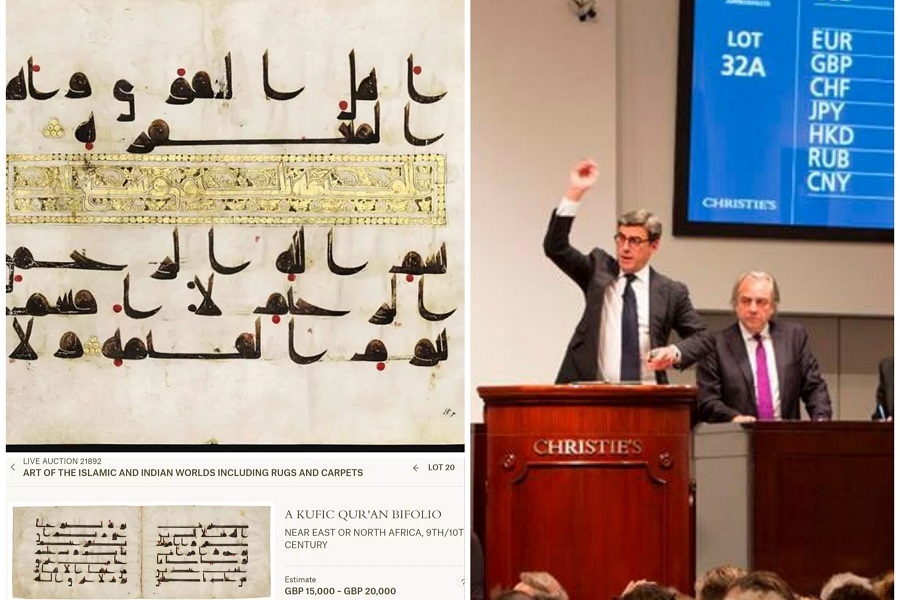Historic Quran Bifolio Withdrawn from Christie's Auction Over Theft Claim

The auction house said it was investigating the claim and that the historic bifolio was no longer for sale, Tehran Times reported.
The bifolio, which dates back to the 9th or 10th century, features the Kufic script, one of the oldest styles of Arabic calligraphy. It was expected to fetch between £15,000 and £20,000 at the auction.
However, some cultural heritage enthusiasts raised concerns that the bifolio belonged to a Quran that was robbed from the Pars Museum in Shiraz, southern Iran, about 20 years ago. The museum had a rare manuscript of the Quran in Kufic script, which was broken into pieces and sold in various auctions around the world.
The theft occurred on April 16, 2003, when four masked men entered the museum with tickets, held the guards at gunpoint, smashed a display case and took a manuscript. The then-governor of Shiraz confirmed the next day that a Quran manuscript was missing. The thieves were never caught.
The Kufic script is named after the city of Kufah in Iraq, where it was believed to have originated. It is characterized by its angular, slow-moving and dignified form. It was used by early Muslims to write down the Quran and went out of use around the 12th century. It is still used as a decorative element in contrast with other scripts.
Source: Agencies



